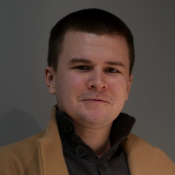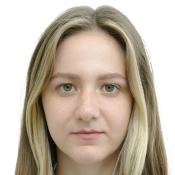Microwave seminar | 02 September 2024
Room 2530 + online

The double interlaced wire metamaterial consists of two identical three-dimensional networks inserted into one another and shifted by half of the period. In this work we propose deforming the metamaterial composed of cubic networks by stretching/compression along the main diagonal axis. We study the influence of the proposed deformation on the dispersion properties of the low-frequency mode: a spheroidal shape of isofrequency surfaces is predicted analytically and observed numerically, a longitudinal polarization of the mode is demonstrated.

Main paper/arXiv, related to the seminar, and other references:
Mikhail V. Rybin, Kirill L. Koshelev, Zarina F. Sadrieva, Kirill B. Samusev, Andrey A. Bogdanov, Mikhail F. Limonov, and Yuri S. Kivshar, “High-Q Supercavity Modes in Subwavelength Dielectric Resonators,” Physical Review Letters, vol. 119, p. 243901, 2017.

How can measurements of wave propagation in all dimensions be made? It will be shown that only two-dimensional measurements are enough to reconstruct the three-dimensional dispersion. The metamaterial under study consists of orthogonal sets of wires.
- Simovski C. R., Belov P. A. Low-frequency spatial dispersion in wire media //Physical Review E—Statistical, Nonlinear, and Soft Matter Physics. – 2004. – Т. 70. – №. 4. – С. 046616.

- Barlevy, A. S., & Rahmet-Samii, Y. (1997). Fundamental Constraints on the Electrical Characteristics of Frequency Selective Surfaces. Electromagnetics, 17(1), 41–68. Link
- M. Pulido-Mancera and J. D. Baena, “Theoretical constraints on reflection and transmission through metasurfaces,” in 2014 8th International Congress on Advanced Electromagnetic Materials in Microwaves and Optics, pp. 37–39, 2014.

A spiral self-complementary plasmonic nanoantenna has been designed to have constant input impedance within a wide frequency range, at least 50 to 300 THz. By covering the antenna with a glass cylinder of variable dimensions, its radiation pattern can be tailored without much effect on the constant input impedance. This approach can facilitate the design of broadly tunable nanoscale antennas that operate efficiently in the infrared region of the electromagnetic spectrum.
- Y. Mushiake, The input impedance of a slit antenna, in Joint Convention Record of Tohoku Sections of IEE and IECE of Japan (Tohoku, Japan, 1948) pp. 25–26.
- Ortiz, J. del Risco, J. Baena, and R. Marqu´es, “Extension of babinet’s principle for plasmonic metasurfaces,” Applied Physics Letters, vol. 119, no. 16, 2021.
- J. D. Baena, S. Asadulina, and J. P. del Risco, “Plasmonic self-complementary spiral nanoantenna with constant input impedance,” in 2023 Seventeenth International Congress on Artificial Materials for Novel Wave Phenomena (Metamaterials), pp. X–028–X–030, 2023.
